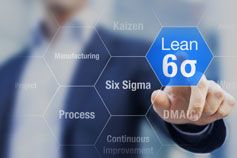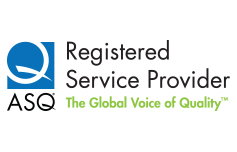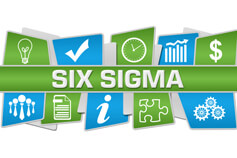
Preparation for ASQ Six Sigma Green Belt Certification
Why Attend
The Six Sigma methodology is a systematic application focused on achieving significant financial results and increasing customer satisfaction. When properly deployed on carefully selected business projects, this methodology can substantially reduce and, in many cases, eliminate defects, process waste, and out-of-control processes, translating into dramatic business gains.
This training course will prepare participants to implement Lean Six Sigma's principles, practices, and techniques. It teaches participants the Define, Measure, Analyze, Improve, and Control (DMAIC) methodology using case studies from various industries. Participants will learn to define improvement projects to satisfy customers and reduce variation. Green belts traditionally lead process stakeholders and may be assigned specific process-level improvement projects that generally do not require the statistical rigor a black belt demonstrates. This course is intense and challenging, yet satisfying in terms of the knowledge gained in 5 days.



